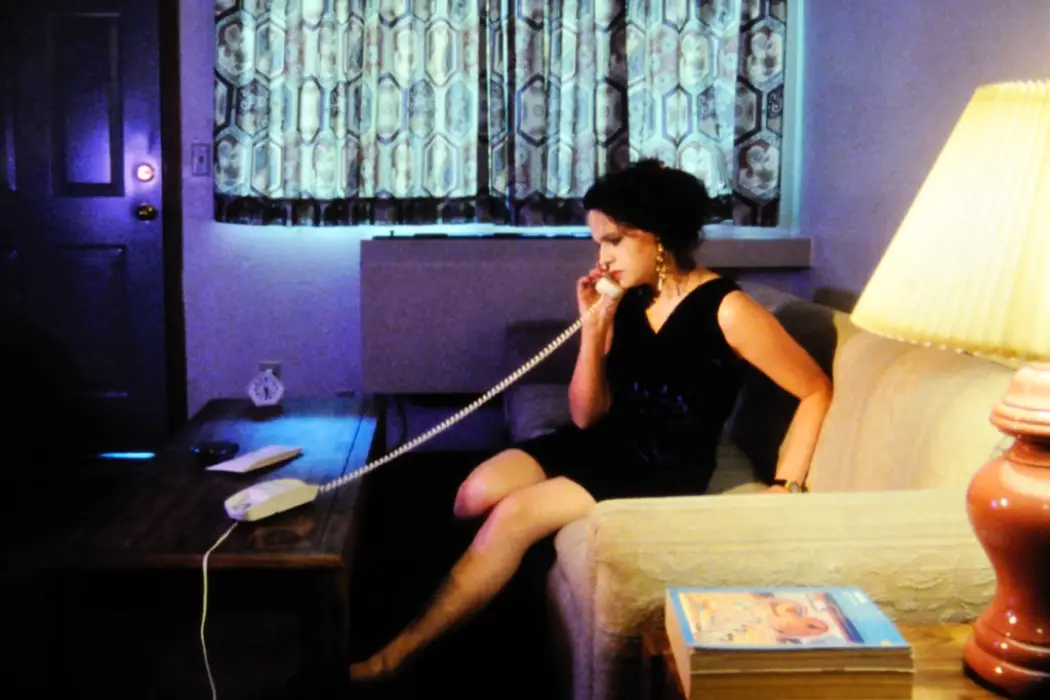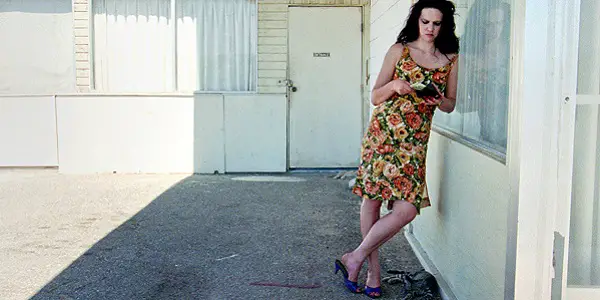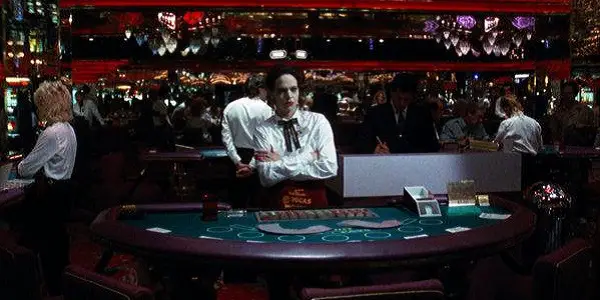QUEEN OF DIAMONDS: A Masterful Depiction Of Life On The Margins

Lee Jutton has directed short films starring a killer toaster,…
Nina Menkes’ 1991 drama Queen of Diamonds chronicles the directionless drift of a Las Vegas blackjack dealer (played by the director’s sister and collaborator, Tinka Menkes). Reminiscent of Chantal Akerman’s classic ode to disaffected womanhood, Jeanne Dielman, 23 quai du Commerce, 1080 Bruxelles, Queen of Diamonds doesn’t unfold so much as it unravels, following its protagonist through the monotony of days and nights spent on the margins of society.
This seemingly lost touchstone of 1990s independent film has recently emerged in the form of a new restoration and played at the Brooklyn Academy of Music for a limited period of time; in the years that have passed since its initial release, Menkes’ perfectly crafted images and soundscapes have lost none of their bleak poetry.
No Direction
The protagonist of Queen of Diamonds generally comes across as a minor character in her own story; things don’t so much happen to her as happen around her. In fact, her name – Firdaus – is barely uttered during the film. In a strange way, that’s fitting, as Firdaus is representative of so many women whose names have been forgotten, women who felt alienated from the world around them and slipped through the cracks of time.

Firdaus lives alone in a seedy building where the main highlights of her day are visits from a best friend who frequently breaks into song and violent fights between a neighbor and his fiancee. When Firdaus attempts to intervene, she’s angrily silenced by the man in question; in a painfully sad but also incredibly infuriating follow-up scene, Firdaus visits with the fiancee in question as she tries on her wedding dress, face black and blue from her fiancee’s beatings but with nary a word said about it. The woman’s attempts to keep things casual and cheerful only emphasize the horror of the scene and the knowledge that so many women have been, and continue to be, in similar positions in their lives – helpless, and wholly at the mercy of men.
Diamond in the Rough
Firdaus’ inability to affect this situation only emphasizes her ghostlike presence in her own life. With clouds of dark hair framing a face powdered deathly white and lips painted blood red, Firdaus is an ethereal figure on the floor of the casino where she works; she barely speaks a word as she repeatedly goes through the motions of dealing, and despite the necessary role she fills on the casino floor, the gamblers around her seem almost unaware of her presence. In one long, seemingly endless shot, Menkes (who shot the film in addition to writing and directing it) trains her camera on Firdaus as she mechanically goes about her work, not exerting any more than the bare minimum of energy in order to get by. It’s just one of many bold visual choices Menkes makes to drive home the endless emptiness of her protagonist’s days.

Menkes’ haunting depiction of the dry, dusty days and neon-drenched nights of Las Vegas is reminiscent of David Lynch at his best and most bizarre. Yet to simply describe her imagery as Lynchian would do the unique nature of her work a disservice, for what Menkes brings to the table is a gaze not just distinctly female, but distinctly feminist. She highlights the violence that seems to continuously menace the lives of women, especially those who society seems to have turned their backs on, without flinching or looking away.
In one deliciously surreal scene, a palm tree burns brightly in the desert as Firdaus stands and watches. Like the scene in the casino, the shot is held long enough to make one distinctly uncomfortable, especially as the tree gradually burns to a crisp. No one intervenes to stop the inevitable destruction; Firdaus merely watches, and with her back to the camera, there’s no telling what she’s thinking as she does so. Like much of Queen of Diamonds, the overall feeling elicited is a unique combination of beauty and dread.
Queen of Diamonds: Conclusion
Queen of Diamonds clocks in at a tight 77 minutes, which is a good thing, as the film is often painful and uncomfortable to watch. But surviving the experience means being rewarded with a film that has more to say with far fewer words than much of independent cinema today.
What do you think? Does Queen of Diamonds sound like lost treasure worthy of being dug up and revisited? Share your thoughts in the comments below.
The new restoration of Queen of Diamonds played at the Brooklyn Academy of Music. You can find more screening dates and locations here.
Does content like this matter to you?
Become a Member and support film journalism. Unlock access to all of Film Inquiry`s great articles. Join a community of like-minded readers who are passionate about cinema - get access to our private members Network, give back to independent filmmakers, and more.
Lee Jutton has directed short films starring a killer toaster, a killer Christmas tree, and a not-killer leopard. Her writing has appeared in publications such as Film School Rejects, Bitch: A Feminist Response to Pop Culture, Bitch Flicks, TV Fanatic, and Just Press Play. When not watching, making, or writing about films, she can usually be found on Twitter obsessing over soccer, BTS, and her cat.












